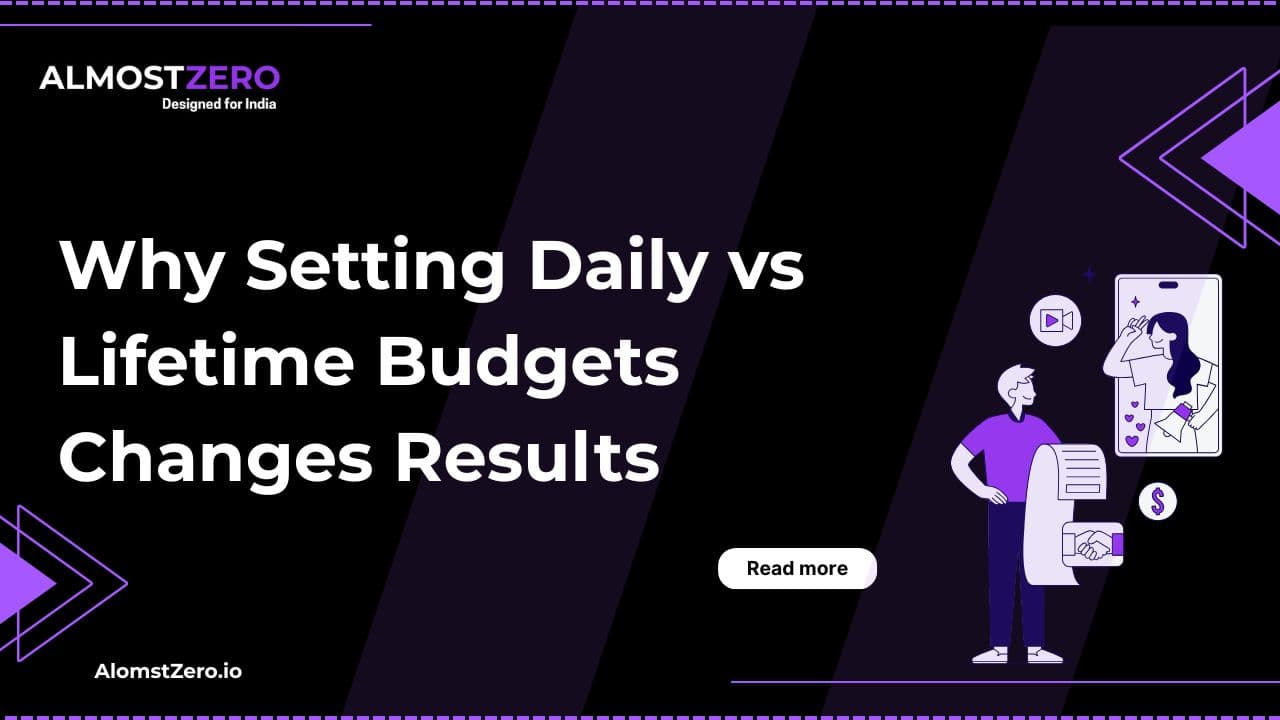Almostzero.io Why Setting Daily vs Lifetime Budgets Changes Results

Why Setting Daily vs Lifetime Budgets Changes Results
One of the most common questions advertisers ask in Meta Ads is: “Should I set a daily budget or a lifetime budget?” At first glance, it might feel like a small technical choice. But in reality, the way you set budgets can completely change how your ads perform, how Meta spends your money, and how quickly you see results.
Daily vs. lifetime budgets affect pacing, delivery, and optimization. Choosing the wrong option for your campaign goal can lead to overspending, missed opportunities, or inconsistent results. Understanding the difference is key to running ads that not only perform but also scale profitably.
1. What Is a Daily Budget?
A daily budget is the amount Meta spends per day, on average, for an ad set or campaign.
- Pros:
- Predictable daily spend.
- Good for always-on campaigns (like lead generation or evergreen sales).
- Ensures steady delivery every day.
- Cons:
- Can slow down if your budget is too low.
- Doesn’t take advantage of sudden spikes in traffic or opportunities.
2. What Is a Lifetime Budget?
A lifetime budget is the total amount Meta will spend over the entire campaign duration. Meta automatically adjusts spend per day based on opportunities.
- Pros:
- Flexible — Meta spends more on high-opportunity days and less on weak days.
- Great for seasonal campaigns, product launches, or flash sales.
- Easier to control total spend for a fixed period.
- Cons:
- Daily spend is unpredictable.
- If not monitored, budget may be exhausted too early.
- Doesn’t suit long-term, evergreen campaigns.
3. How Budget Types Change Results
a. Delivery & Pacing
- Daily budgets = even pacing.
- Lifetime budgets = algorithm-driven pacing (spend more when conversions are likely).
b. Optimization Speed
- Lifetime budgets allow Meta to learn faster with flexible spend.
- Daily budgets may limit results if spend is too small to exit learning.
c. Best Use Cases
- Daily → Long-term, always-on campaigns (leads, awareness).
- Lifetime → Seasonal campaigns, sales, launches, short bursts.
d. Risk Factor
- Daily = Safe, predictable.
- Lifetime = Higher performance potential but requires monitoring.
4. Real Example
A clothing brand tested both budget types for a festive sale:
- Daily Budget: ₹1,000/day for 10 days. Result = Steady but average sales.
- Lifetime Budget: ₹10,000 for 10 days. Meta spent more during weekends (high traffic), leading to 25% more conversions without overspending.
5. Common Mistakes to Avoid
- Using lifetime budgets for evergreen campaigns — results become inconsistent.
- Setting daily budgets too low — ads stay stuck in learning.
- Not aligning budget type with campaign duration.
- Ignoring pacing — lifetime campaigns may spend aggressively upfront.
6. Pro Tips for Choosing Budget Type
- For testing new audiences/creatives: Use daily budgets to control spend.
- For short-term campaigns (7–30 days): Use lifetime budgets for flexibility.
- Always set end dates for lifetime budgets to avoid overspending.
- Monitor frequency and delivery insights regularly.
- Don’t switch budget types mid-campaign — restart instead.
Daily vs. lifetime budgets may look like a small toggle in Ads Manager, but the impact on delivery and performance is huge. The right choice depends on your campaign goal — steady long-term growth or short-term flexible bursts.
At AlmostZero, we help businesses choose smart budget strategies that match their goals, ensuring every rupee is spent effectively.
Want to stop guessing and start scaling with the right budget strategy? Partner with AlmostZero and let’s optimize your campaigns for maximum ROI.